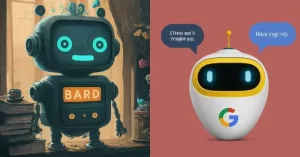In the quickly undeveloped world of artificial insights, character AI is approaching as an exciting and transformative innovation. With the capacity to give virtual characters with human-like qualities and person, Character AI Development Techniques are the way we connect with and understand digital content.
What is Character AI?
The technology that gives virtual characters identities, emotions, and reasoned actions is known as character AI or artificial intelligence for characters. Machine learning is integrated with Character artificial intelligence. Through the use of human data, emotional intelligence, and natural language understanding combine to create compelling and dynamic virtual interactions.
“Discover Character AI Services’ Power! Enhance Your Projects with Expertise at the Pro Level. Sign Up for Fiverr Pro Now!”
Micha Kaufman
Character AI Significance in Video Games
Video games are one of the most common uses of Character artificial intelligence. Traditional games tend to have shallow, unrealistic non-player characters (NPCs), which makes the player experience less engaging. Nevertheless, game creators can now construct virtual characters with character AI who not only respond realistically but also change and become closer to gamers over time.
How Player Experience Is Improved by Character AI
The player experience is improved by Character artificial intelligence in several ways. First of all, it gives the game a touch of spontaneity and unpredictability, which makes every replay different and thrilling. Virtual characters can make decisions based on their unique characteristics, which can result in unexpected consequences and branching stories. These individuals have distinct personalities and goals.
Secondly, More realistic and interesting conversations between gamers and virtual characters are made possible by Character artificial intelligence. The days of monotonous and scripted exchanges are long gone. Players can now have meaningful interactions with virtual characters that react to their input smartly and dynamically. This improves immersion and enables users to develop emotional bonds with the virtual environment.
Finally, by responding to the is and playstyles of players, Character AI may offer individualized experiences. The ability of virtual characters to learn from players’ choices and modify their behavior accordingly gives the game surroundings a feeling of life and agency.
Types of Character AI: Reactive vs. Proactive
Character AI can be Categorized into responsive and proactive types. Reactive character AI responds to player Actions or specific Triggers in the game environment. These virtual Characters respond to boosts in a predetermined manner, Offering a more predictable but still engaging experience.
On the other hand, proactive Character AI goes beyond reactive behaviors. These virtual characters have their own goals, Motivations, and motivations, which they actively seek. Proactive characters can start interactions with players, make Decisions that shape the game world, and display free Behaviors based on their interesting personalities.
Also Read- 10 Ways Virtual Reality Marketing Enhances Customer Engagement in the Digital Age
Implementing Character AI in Game Development
Programming, machine learning, and content creation are all combined to implement character artificial intelligence in game development. It is the responsibility of game creators to construct virtual characters that have unique personalities and characteristics, as well as to specify their actions and reactions and craft conversations that capture their essence.
Character AI programming involves developing models and algorithms that let virtual characters understand and react to user input. While machine learning algorithms assist virtual characters in learning to respond to player actions over time, natural language processing algorithms are utilized to comprehend and produce a conversation that is similar to that of humans.
Character AI technology also depends heavily on content production. A wide range of conversations, animations, and actions that fit the personality of the virtual characters must be produced by game creators. This calls for an in-depth knowledge of psychology, player involvement, and communication.
Challenges and Considerations in Character AI Programming
Character AI can completely change user experiences, but game developers must take into account several issues and problems. Finding a balance between player agency and reality is a big problem. Not only should virtual people have complex and realistic actions, but they should also let players make a big difference in the game world. It’s critical to strike the correct mix between player-driven and Scripted interactions.
Managing the enormous volume of data and decision-making processes associated with character Artificial intelligence is another difficulty. Efficient techniques and processing resources are needed for virtual characters to process and react to player input in real-time. Character Artificial intelligence systems must be optimized by game creators to ensure dynamic and responsive gameplay.
Implementing AI for characters also involves ethical considerations. Stereotypes and damaging representations should be avoided while creating virtual characters; instead, inclusivity and diversity should be prioritized. The possible effects of character artificial intelligence (AI) on player well-being should be taken into account by game producers, who should make sure that the actions and conversations of virtual characters promote enjoyable and healthful gaming experiences.
Examples of Successful Character AI Implementation in Popular Games
Character artificial intelligence (AI) has been effectively used in several games to improve player experiences. “Red Dead Redemption 2,” an open-world action-adventure game with a wide range of Virtual Characters with complex relationships and behaviors, is one prominent example. In this game, virtual characters interact with the player Characters realistically and Develop special relationships with them.
Another illustration is the immersive role-playing game “The Witcher 3: Wild Hunt,” in which the player character interacts with virtual characters that have their objectives, Motives, and developing relationships. The Artificial intelligence (AI) technology of the game generates a dynamic, living environment where the conversations and actions of virtual persons have far-reaching effects.
The Future of Character AI in Gaming
Character artificial intelligence (AI) in video games has a very bright future. We can anticipate ever more lifelike and engaging virtual personalities as technology develops. The difference between human and artificial intelligence interactions will become more difficult as natural language processing and emotional intelligence advances allow virtual characters to comprehend and produce more complex conversations.
In addition, character AI will keep developing for uses beyond video games. Chatbot marketing for customer service, virtual reality, and even educational simulations could benefit from the addition of virtual characters with human-like personalities and emotions. Character AI has the potential to revolutionize digital experiences in a variety of industries by offering kind and engaging interactions.
Also Read- The Ultimate Guide to Augmented Reality Marketing: 10 Tips
Character AI Tools and Resources for Developers
Character artificial intelligence (AI) systems need specific resources and tools to be built. To incorporate character AI into their games, developers can take advantage of pre-existing AI frameworks like Unreal Engine’s behavior tree systems and Unity ML agents. A variety of tools and algorithms are offered by these frameworks for creating virtual characters and specifying their actions.
Further, creators can find helpful materials and support in the form of online communities and forums devoted to AI in game creation. These platforms offer conversations, code examples, and lessons on developing trends and best practices in character AI.
Conclusion
The way we engage with and enjoy digital material is being completely transformed by character artificial intelligence (AI). Character AI elevates virtual experiences—be they video games, virtual reality, or chatbots for customer service—by increasing immersion and engagement. character artificial intelligence generates believable and engaging interactions by giving virtual characters human-like traits and personalities. This engages users.
Character artificial intelligence (AI) will become more and more important in determining how digital interactions are shaped in the future as technology develops. Character artificial intelligence (AI) has the potential to completely change several industries, from gaming to customer service to instructional simulations. Through appropriate resources, tools, and ethical concerns, game developers can effectively utilize character AI to produce immersive and captivating digital experiences.
FAQs of Character AI Development Techniques
Q: How does Character AI work?
A: Character machine learning creates characters that converse realistically with users by analyzing human behavior, language patterns, and emotions using algorithms and data sets.
Q: What are some applications of Character AI?
A: Applications for character Intelligence can be found in chatbots, virtual assistants, gaming, animation, customer support, education, and the entertainment sector.
Q: What are the benefits of using Character AI?
A: Character algorithms improve user productivity, engagement, and customization in tasks like storytelling, problem-solving, and communication.
Q: Is Character AI ethical?
A: Character intelligent machines raise ethical questions about the misuse of produced characters, bias in algorithms, and privacy. To address these problems, developers need to follow ethical standards.
Q: Can anyone develop Character AI?
A: Skill in machine learning, natural language processing, and brain science are necessary for creating strong Character AI. However, for creators with the required resources and abilities, technological developments are making it more accessible.





